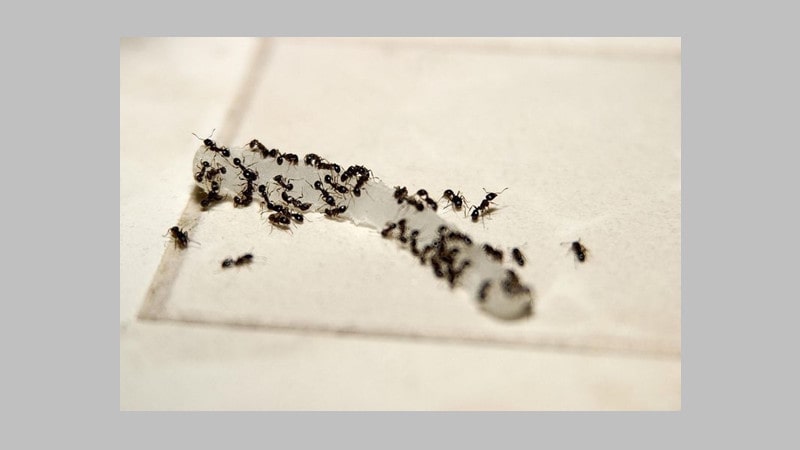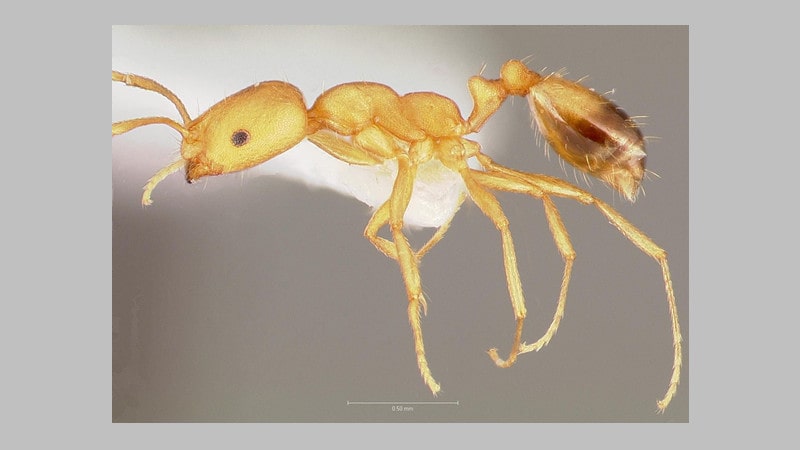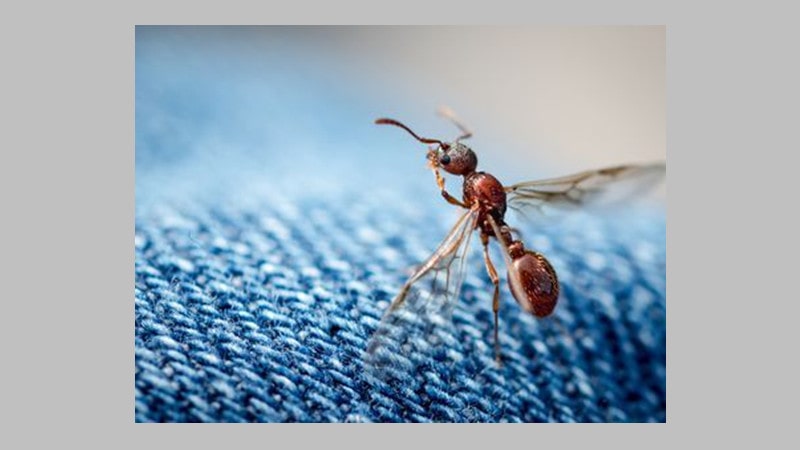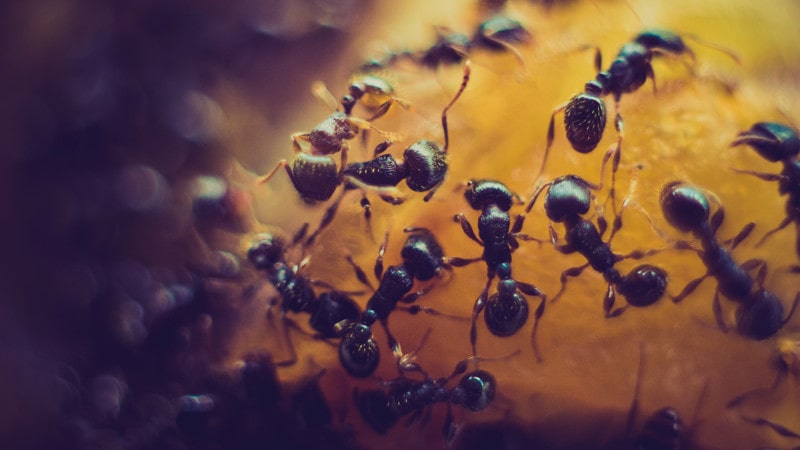From having the longest lifespan of all pests to lifting up to 50 times their body weight, ants are unique in many aspects. However, these insects aren’t so interesting when they invade your car. So, how do you get ants out of your car? This article offers you 5 simple methods of removing ants from your vehicle.
11 Types of Ants You Are Likely to Find in Your Car
Since ants are very prolific, you should expect to find many species of ants out there. Studies have revealed that there are tens of quadrillions of ants in the world today, with over 1,000 species found in North America alone. These species are also fairly diverse in their physical appearance. Here are 19 of the most common types of ants you are likely to find in your car.
1. Carpenter Ants

Image source: Pinterest
Carpenter ants are either red, black, or brown. They are the second most destructive ants after termites. They usually chew and tunnel wet wood to build their nests.
2. Fire Ants

Image source: Pinterest
The crimson-colored fire ants are red in color and commonly found in South America. Unlike other ants, fire ants are known to cause a painful sting. And although the sting isn’t lethal, it can cause a serious allergic reaction. These ants normally look for warmer places to hide during the cold season.
3. Crazy Ants

Image source: Pinterest
Crazy ants are known to move in a frenzied, zigzag way and they usually work in harmony. They use route finders and carriers to move food scraps that can’t be moved by a single ant. These ants are more clever than any average ant species. If you find one crazy ant moving around in your, there is likely a whole colony nearby.
4. Little Black Ants

Image source: Pinterest
This type of ant is either dark-brown or jet-black and is commonly found in densely wooded areas in the summer. You will also find it hiding behind walls, beneath logs, under rocks, and shadowy voids in cars. Although little black ants sting, you won’t feel the perforation because they’re too tiny.
5. Odorous Ants

Image source: Pinterest
Odorous ants are shiny black and emit a strong odor like rotten coconuts when stepped on. These ants are commonly found in cars, houses, and other areas near human activity, especially where they can easily find food scraps. Odorous ants have a remarkable scent trailing habit and their colonies can grow up to 50,000 ants.
6. Pharaoh Ants

Image source: Pinterest
Pharaoh ants are known for their striking brown or yellowish upper bodies. This color makes them look almost transparent. They are hungry scavengers that commonly frequent houses, restaurants, cars, stores, and other places with food scraps. Sadly, pharaoh ants are known to spread salmonella and other diseases.
7. Pavement Ants

Image source: Pinterest
Pavement ants are very common in houses, cars, and other establishments where they can find food leftovers. They are either dark-brown or black in color and love sweet foods. The name pavement comes from their tendency to create nests on or under sidewalks and concrete patios.
8. Ghost Ants

Image source: Pinterest
The name “Ghost” is derived from their pale exoskeletons and tiny size. These ants flourish in areas with tropical climates like Florida and Hawaii. They are night-time scavengers of fungus and fond of insect honeydew. Ghost ants don’t sting.
9. Argentine Ants

Image source: Pinterest
Argentine ants are either shiny-light or dark-brown and can grow between 1/16-inch and ¼-inch long. They also feature an uneven thorax and a 12-segmented antenna. Their colonies can have millions of ants, sub-colonies, and several queens. You will find them in cars, homes, restaurants, hospitals, and other public places.
10. Leafcutter Ants

Image source: Pinterest
Leafcutter ants are commonly found in southwestern states, especially in agricultural farms. There are two species of this type of ant, both of which are light-brown with unusually long legs. Their colonies consist of one queen and millions of workers. The name leafcutter is derived from their tendency to feed on plant leaves.
11. Citronella Ants

Image source: Pinterest
Citronella ants are amber in color and they derive their name from their lemon verbena stench that they release when stepped on or in danger. These ants love insect honeydew and infest damp areas.
Why Do You Have Ants in Your Car?

Ants are very organized in their daily activities. Once they build a nest, they organize themselves into several groups, including the workers and those who protect the queen. The workers will walk around in search of food. They have a very strong sense of smell and therefore they’ll find even the tiniest food scraps by following scents.
Therefore, they might wander into your parked car as they walk around your home looking for food. If there are crumbs and food scraps strewn in your car, they’ll attract all kinds of ants.
If ants find crumbs in your car, they will come back with their fellow foragers for more. You might also find ants in your car if you are used to parking on an anthill or a parking lot with ant nests. These creeps will crawl up and into your car when it’s not in motion.
Ants can get into your car if you carry logs or other items that have been lying outdoors for some time. Your shoes can also carry these crawlers into your vehicle if you don’t wipe your shoes after walking in the woods. It’s also important to ask your passengers to wipe their shoes before entering your car if they’ve been walking in the woods.
How to Get Ants Out of Your Car

Getting rid of ants in your car can be a daunting task if you don’t know what to do. But it can be a simple process if you identify the reason why the creeps are there in the first place. Here are simple steps to follow when removing ants from your car.
1. Park Your Car in a Different Position
If you are used to parking your car under a tree or near an anthill, move it to a different spot. If your parking lot is next to the lawn or tall grass, make sure the grass is trimmed regularly to deter ants from building their nests in it. Also, check your parking lot to ensure that it doesn’t have pavement ants hiding in the cracks.
2. Remove Trash from Your Car
Some of the items lying idle in your car could be the reason why there are so many ants and other crawlers moving around. Even if some of these items aren’t related to food, they might have scents that attract ants. So, start by getting rid of the trash in your car, including food wrappers and packaging.
3. Vacuum Your car
After removing all the trash from your car, vacuum its interior and wash the upholstery thoroughly. Don’t forget to vacuum any cracks or hidden areas in your car because they are perfect hiding spots for crawlers.
4. Wash Your Car Tires and Wheels
Since your car tires and wheels are always in contact with the ground, they need to be thoroughly cleaned to remove the remaining ants. You should also treat your tires and wheels to dissuade ants from climbing onto your car.
5. Use Traps
If none of the above methods helps you get rid of ants in your car, set ant traps in strategic places in your car. You can either make your own ant trap at home or buy one from your local store.



